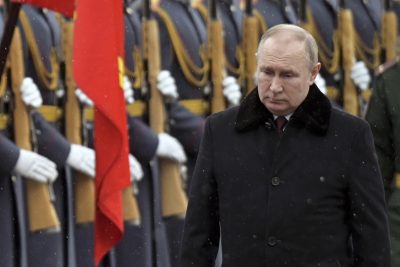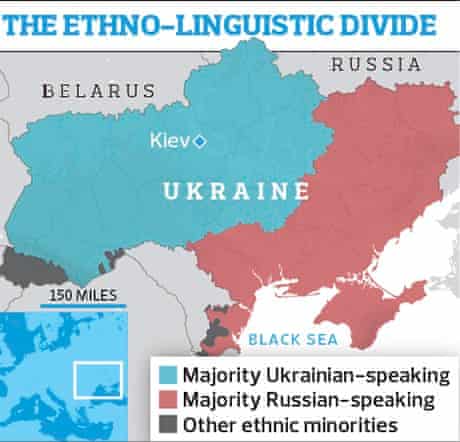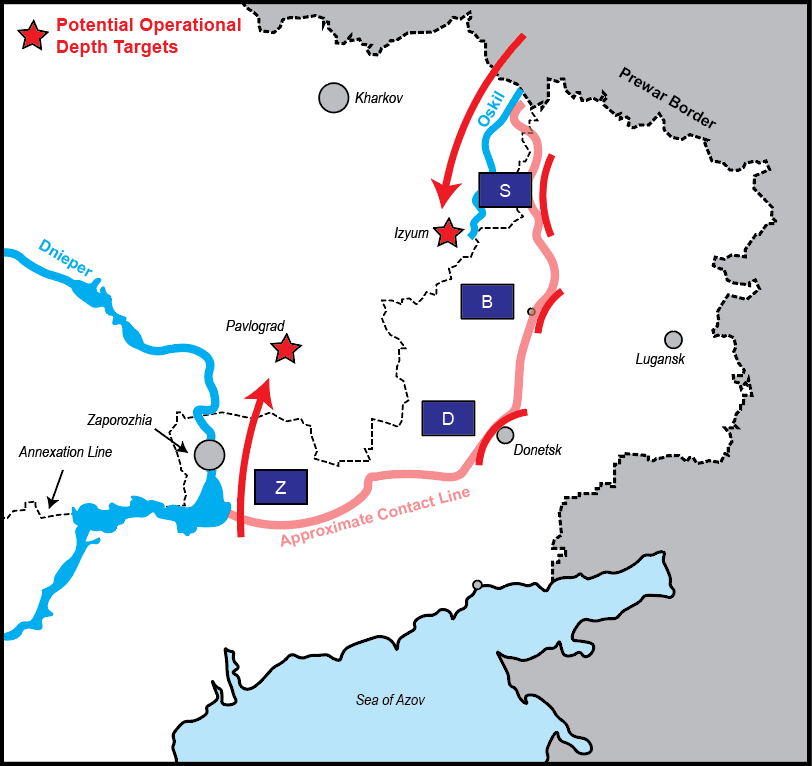
What has not happened is that Russian WAR aims have not been blocked or defeated. Assuming we know what those war aims happen to be. My point though is that a massive wave of russian manpower reasonably trained can secure the rusxsian sector of the Ukraine and plausibly destroy the best available Ukraine forces.
That should bring both sides to the table. Or the USA may just change its mind and so may NATO. No GAS is no fun. My point is that just making the position expensive surely ends trhis war. None of these idiots want to walk through an artillary barrage as a daily occurance and that is what they are catching.
If the Russians choose to not adavance from dug in position, we soon have a Korean standoff in which 5000 attack, suffer 3000 dead against perhaps a hundred. It really is that awful. Neither side is really good enough to do much better.
A Russian Victory in Ukraine Won’t End the War
By Mike Whitney
Global Research, January 27, 2023
Region: Europe, Russia and FSU
Theme: Intelligence
In-depth Report: UKRAINE REPORT
https://www.globalresearch.ca/russian-victory-ukraine-wont-end-war/5806188
***
Behind Washington’s desperate appeal for tanks and other lethal weaponry for Ukraine, looms the nagging prospect that Russia’s winter offensive may have already begun in the south where heavy fighting has broken out along the Line of Contact in the Zaporizhia region. While the information from the front remains sketchy, some analysts think that Russia is planning to send its troops and armored units northward in order to block vital supply-lines and trap Ukrainian forces in the east.
A Russian blitz northward would likely be synchronized with the movement of a second large grouping pushing south along the Oskil River. These two dagger-like thrusts would be accompanied by multiple missile strikes aimed at strategic bridges and railway-lines crossing the Dnieper River. If the Russians were able to succeed in such an operation, the bulk of Ukraine’s army would be effectively encircled in the east while Moscow would have regained control over most of its traditional territories. The offensive might not end the war, but it would end Ukraine’s existence as a viable, contiguous state. This is an excerpt from an article at Aljazeera:
Moscow’s forces are pushing towards two towns in Ukraine’s southern Zaporizhia region, where fighting intensified this week after several months of a stagnant front… Vladimir Rogov, a Russian-installed official in the region, said offensive actions were concentrated around two towns: Orikhiv, around 50km (30 miles) south of Ukrainian-controlled regional capital Zaporizhzhia, and Hulyaipole, further east….
The Russian army later claimed for a second day in a row that it had taken “more advantageous lines and positions” after “offensive operations” in the Zaporizhia region…. In its daily report on Sunday,the Ukrainian army said “more than 15 settlements were affected by artillery fire” in Zaporizhia…. He also said this week that fighting has “sharply increased” in the southern region.” (“Russia advances towards two towns in Ukraine’s Zaporizhia region”, AlJazeera)
Typically, I wouldn’t spend much time on a topic for which there is so little evidence and so much speculation. But people are following events very closely in Ukraine because they want to know what Putin plans to do with the 550,000 combat troops that are presently scattered across the theatre or gathered along the perimeter in Belarus. The assumption is that Putin will use these forces in a winter offensive that could dramatically impact the course of the war. I agree with that assumption, but I’m not entirely convinced that the fighting in the south proves that the offensive has already started. Even so, the buzz on the Telegram channels and Twitter is hard to ignore and could indicate that my skepticism is unwarranted. For example, here are a few blurbs from independent sites that suggest the offensive is already underway:
The Russian Army is still actively advancing in the #Zaporozhye direction, the front has been pressed to a depth of 7km. At the moment our advance in three directions on the #Orekhov section. On the west side there is fighting for #Novoandreyevka and #Shcherbaki, on the east for #Belogorye and Malaya Tokmachka, on the southeast there is fighting for #Novodanilovka, which is only 6.5 km from #Orekhov. A defensive breakthrough here will allow the RF Armed Forces to develop an offensive in several directions at once, literally cutting the AFU grouping into two parts. Telegram
Or this:
Zaporozhye update
The Russian army continues its offensive on the Zaporozhye Front
The troops of the Southern and Eastern military districts are conducting an offensive on a wide front – up to 60 km (in the Vasilyevsky and Pologovsky districts).
The advance of troops is slowed down due to many minefields.
Or this:
The offensive is going according to plan: close fights in several areas. Fortified positions and regions of the enemy are actively treated with bombs, mines, and howitzer shells; only then come armored vehicles with infantry.
According to the General Staff of the Armed Forces of Ukraine in the Zaporozhye direction, the RF Armed Forces are hitting the Armed Forces of Ukraine with all types of weapons in areas of more than 25 settlements, including Olgovskoe, Gulyaipole, Volshebnoe, Novodanilovka, Kamenskoe and Plavni of the Zaporozhye region, Vremovka and Novopol DNR.
This is just a small sampling of the postings that have been flooding various sites for the last few days. A great number of the comments are from people who appear to have first-hand knowledge of events on the battlefield. I can’t speak for their accuracy, but the volume of reports (and their intensity) suggest that something out-of-the-ordinary is taking place.
There’s also a new post at Moon of Alabama in which Bernard states unequivocally that the offensive is already underway. Here’s what he said:
The long expected Russian offensive in Ukraine has begun….
I and others have suggested for quite some time that the Russian forces will use the southern Zaporizhia region for a large thrust into the far back of the Ukrainian forces around Bakhmut…
The Russian moves against the third and fourth Ukrainian defense lines will likely be supported by a move from the south that will liberate the rest of the Zaporiziha and Donetsk oblast…..
There is no Ukrainian artillery brigade in the sector. There are thereby no counter-artillery capabilities available…..The aim of the Russian thrust in the south will not be to take cities like Zaporiziha. The aim is to bring the main transport routes, railways and roads, from west-Ukraine to the front in east Ukraine under Russian artillery fire. This will prevent not only the re-supply for the Ukrainian troops on the eastern front but also their exit from the front line. A 100 kilometer (60 miles) thrust to the north would mostly do that. A complementary thrust from the north towards south, which may or may not be coming, would finally close the cauldron.” (“Ukraine – Russian Army Activates Southern Front”, Moon of Alabama)

Although I’m still not sure that the offensive has actually begun, I entirely agree with MoA that Russia’s plan will be some variation of the strategy he presents in his article. In fact, a similar strategy was laid out by military historian Big Serge in a recent Substack post titled “Russo-Ukrainian War: The World Blood Pump”. The two analysts appear to have drawn similar conclusions as to what we should expect in the weeks to come. Here’s an excerpt from the article:
At the moment, the majority of Russian combat power is uncommitted, and both western and Ukrainian sources are (belatedly) becoming increasingly alarmed about the prospect for a Russian offensive in the coming weeks. Currently, the entire Ukrainian position in the east is vulnerable because it is, in effect, an enormous salient, vulnerable to attack from three directions.
Two operational depth objectives in particular have the potential to shatter Ukrainian logistics and sustainment. These are, respectively, Izyum in the north and Pavlograd in the South. A Russian thrust down the west bank of the Oskil river towards Izyum would simultaneously threaten to cut off and destroy the Ukrainian grouping on the Svatove axis (S on the map) and sever the vital M03 highway from Kharkov. Reaching Pavlograd, on the other hand, would completely isolate the Ukrainian forces around Donetsk and sever much of Ukraine’s transit across the Dneiper.

Both Izyum and Pavlograd are roughly 70 miles from the start lines of a prospective Russian offensive, and thus offer a very tempting combination – being both operationally significant and in relatively manageable reach. Beginning yesterday, we started to see Russian advances on the Zaporozhia axis. While these consist, at the moment, mainly of reconnaissance in force pushing into the “grey zone” (that ambiguous interstitial frontage), RUMoD did claim several settlements taken, which could presage a genuine offensive push in this direction. The key tell would be a Russian assault on Orikhiv, which is a large town with a genuine Ukrainian garrison in it. A Russian attack here would indicate that something more than a probing attack is underway.
It is difficult sometimes to parse out the difference between what we predict will happen and what we want to happen. This, certainly, is what I would choose if I was in charge of Russian planning – a drive south along the west bank of the Oskil river on the Kupyansk-Izyum axis, and a simultanious attack northward past Zaporozhia towards Pavlograd. In this case, I believe simply screening Zaporozhia in the short term is preferable to getting bogged down in an urban battle there.
Whether Russia will actually attempt this, we do not know.Russian operational security is much better than either Ukraine’s or their proxy forces (Wagner and the LNR/DNR Milita), so we know significantly less about Russia’s deployments than we do about Ukraine’s. Regardless, we know that Russia enjoys a strong preponderance of combat power right know, and there are juicy operational targets within range.” (“Russo-Ukrainian War: The World Blood Pump“, Big Serge, Substack)
Not surprisingly, fighting has broken out around Orikhiv which Big Serge says “would indicate that something more than a probing attack is underway.” In other words, this could, in fact, be the opening phase of the winter offensive. And, if it is, then we should assume that there will be a shift away from the ‘positional battles of attrition’ we’ve seen up to this point. The Russia offensive will not face defensive lines of heavily fortified trenches that require weeks of softening with long-range artillery until armored units can be dispatched for mop-up operations. The Big Arrow moves that Serge anticipates suggests that we could see significant territorial gains in lightly-defended areas. That means that things will likely move much faster than they have in the last 11 months. It also means that Ukrainian forces in the Donbass will be effectively cut off from Kiev and left to fend for themselves. Naturally, the casualties are bound to be significant.
According to reports in the media, CIA Director William Burns secretly visited Kiev last week to warn Zelensky about the impending Russian offensive. Burns probably presented a scenario very similar to the strategy laid out by MoA and Big Serge. But whatever Burns may have said to Zelensky, it had no effect on the Ukrainian president at all. Zelensky has continued to send troops to the frontlines (Bakhmut) despite the hopelessness of the situation and despite the fact that the Ukrainian defensive positions are collapsing by the day. There’s no longer any doubt that Russian forces will eradicate pockets of resistance in the east or that the battered remnants of the Ukrainian army will be forced to retreat. It’s only a matter of time.
We’re not saying it’s all going to be “smooth sailing” for the Russians from this point on. No, there are going to be plenty of bumps in the road ahead. But given Russia’s superiority in manpower, firepower and industrial base, we think Russia will undoubtedly win this first phase of the war. The problem is that –even if the Russian army clears all the territory east of the Dnieper River and annexes it into the Russian Federation– that doesn’t mean the fighting will stop. It won’t stop. US-backed forces will continue to launch attacks from across the river, they’ll deploy commandos to strike behind Russian lines, they’ll train paramilitaries to ignite an insurgency, and they’ll fire missiles at Crimea, Russia and, perhaps, even Moscow itself.
Is Putin ready for that?
Washington is not going to throw in the towel because Russia won the first round in a 10-round fight. The United States is still fully committed to its plan to “weaken” Russia in order to become the dominant player in the world’s most promising market, Central Asia. In that regard, the fighting in Ukraine has not dampened Washington’s resolve at all, in fact, we think the conflict is feuling the widespread Russophobia and the relentless cries for revenge. How else do we explain the persistent escalation that has not yet sparked even a peep of public protest? And, keep in mind, the US has already blown up NordStream 2, pushed Europe into a severe Depression, sabotaged global supplylines for the foreseeable future, derailed the 40 year-long “globalization” project, and done everything in its power to goad China into a shooting war. What these incidents show is how much importance the US attaches to its priviledged role in the global order and the risks it is willing to take to preserve that role. In short, the United States will do ‘whatever it takes’ to maintain its iron-grip on power.
If I was Putin, I would prepare myself for a long and bloody struggle. Because that’s what he’s in for.
*
Note to readers: Please click the share buttons above. Follow us on Instagram and Twitter and subscribe to our Telegram Channel. Feel free to repost and share widely Global Research articles.
This article was originally published on The Unz Review.
No comments:
Post a Comment